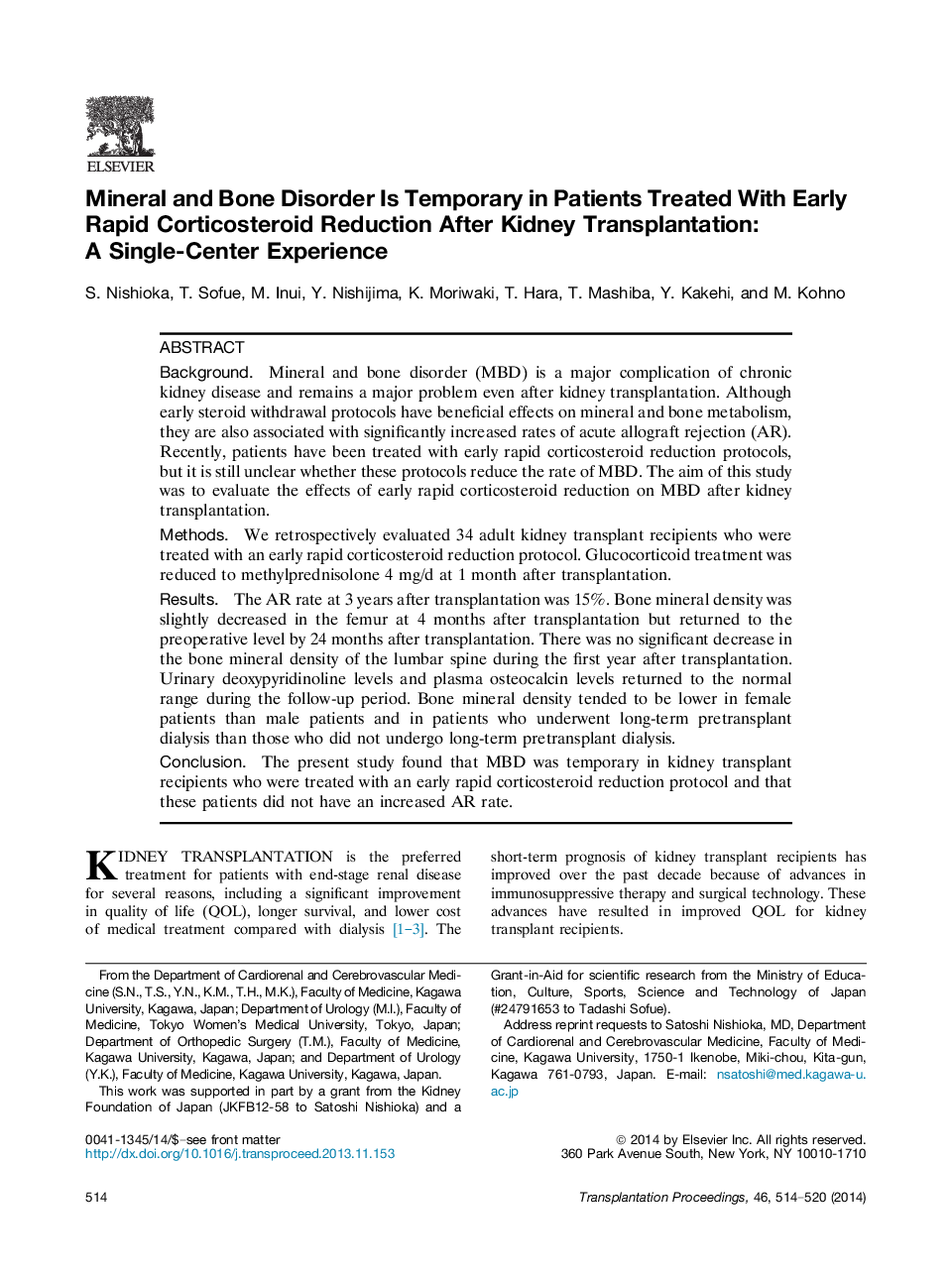| Article ID | Journal | Published Year | Pages | File Type |
|---|---|---|---|---|
| 4258773 | Transplantation Proceedings | 2014 | 7 Pages |
BackgroundMineral and bone disorder (MBD) is a major complication of chronic kidney disease and remains a major problem even after kidney transplantation. Although early steroid withdrawal protocols have beneficial effects on mineral and bone metabolism, they are also associated with significantly increased rates of acute allograft rejection (AR). Recently, patients have been treated with early rapid corticosteroid reduction protocols, but it is still unclear whether these protocols reduce the rate of MBD. The aim of this study was to evaluate the effects of early rapid corticosteroid reduction on MBD after kidney transplantation.MethodsWe retrospectively evaluated 34 adult kidney transplant recipients who were treated with an early rapid corticosteroid reduction protocol. Glucocorticoid treatment was reduced to methylprednisolone 4 mg/d at 1 month after transplantation.ResultsThe AR rate at 3 years after transplantation was 15%. Bone mineral density was slightly decreased in the femur at 4 months after transplantation but returned to the preoperative level by 24 months after transplantation. There was no significant decrease in the bone mineral density of the lumbar spine during the first year after transplantation. Urinary deoxypyridinoline levels and plasma osteocalcin levels returned to the normal range during the follow-up period. Bone mineral density tended to be lower in female patients than male patients and in patients who underwent long-term pretransplant dialysis than those who did not undergo long-term pretransplant dialysis.ConclusionThe present study found that MBD was temporary in kidney transplant recipients who were treated with an early rapid corticosteroid reduction protocol and that these patients did not have an increased AR rate.
